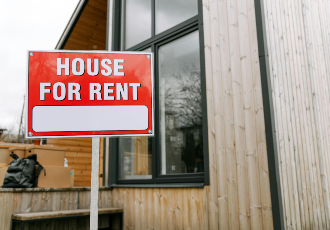
Boomers and the Rental Boom: Why More Canadian Seniors Are Choosing to Rent
For generations, homeownership was considered the ultimate financial goal—something to strive for and hold onto in retirement. But for a growing number of Canadian seniors, renting is becoming the new norm.
According to new research from Point2Homes, the fastest-growing segment of the rental market in Ontario is Boomers aged 65+. In Toronto alone, over 59,000 solo seniors are renting their homes. What’s driving this shift? A combination of downsizing, a desire for less responsibility, divorce, and widowhood are all playing a role in seniors choosing to rent rather than own.
Why More Seniors Are Renting
For many older Canadians, renting offers financial flexibility and freedom from the responsibilities of homeownership. Here are some of the key reasons why seniors are making the switch:
* Downsizing – Large family homes become impractical, and renting offers a simpler, maintenance-free lifestyle.
* Less Responsibility – No more worrying about property taxes, repairs, or maintenance.
* Life Transitions – Divorce and widowhood often push individuals to seek smaller, more manageable living spaces.
* Financial Flexibility – Renting can free up home equity for travel, healthcare, or other lifestyle expenses.
* Location & Convenience – Seniors can choose rental units close to family, healthcare, and social activities.
As more seniors enter the rental market, there’s an increasing demand for housing that accommodates their unique needs.
The Growing Pressure on the Rental Market
Historically, rentals—especially smaller apartments and condos—have been dominated by young professionals and students. However, as more seniors opt to rent, competition for these units is increasing.
The Point2Homes study highlights the need for rental properties designed with older adults in mind—focusing on accessibility, affordability, and adaptability.
“As the population ages, there’s growing demand for homes that feel supportive, welcoming, and adaptable to changing needs,” says Alexandra Ciuntu, author of the study.
She adds that the future of senior living may involve more community-focused rental housing, smart safety systems, and accessible designs that allow seniors to maintain their independence while staying connected.
Are We Building Enough Senior-Friendly Rentals?
The reality is that the number of seniors' housing suites built in the past decade is not keeping up with demand.
Challenges like skyrocketing construction costs, development fees, and government red tape make it difficult to build new senior-friendly housing. According to CMHC’s latest Housing Market Outlook, new housing starts—including rentals—are expected to slow down between now and 2027.
This lack of supply is making it harder for seniors to find affordable and accessible rental options. As a result, many are forced to compete for general market rentals that don’t always meet their needs—units with stairs, limited accessibility features, or high monthly costs.
What’s Next for Senior Rentals in Canada?
As the 65+ population continues to grow, the demand for senior-friendly rentals will only increase. The challenge now is ensuring there are enough homes to meet that demand.
Moving forward, housing developers and policymakers need to focus on:
* Creating adaptable, senior-friendly rental units with accessibility features
* Reducing financial barriers that prevent seniors from affording quality housing
* Encouraging the development of rental communities that support aging in place
* Integrating technology to improve safety and convenience for older renters
Seniors are reshaping Canada’s rental market, and it’s time for the housing industry to catch up.
Final Thoughts
Whether driven by necessity or choice, more Canadian seniors are choosing to rent—and the housing market must evolve to meet their needs. With rising rental demand, limited supply, and affordability concerns, it’s more important than ever to focus on creating senior-friendly rental options that promote independence, comfort, and community.
Photo courtesy of Ivan Samkov
